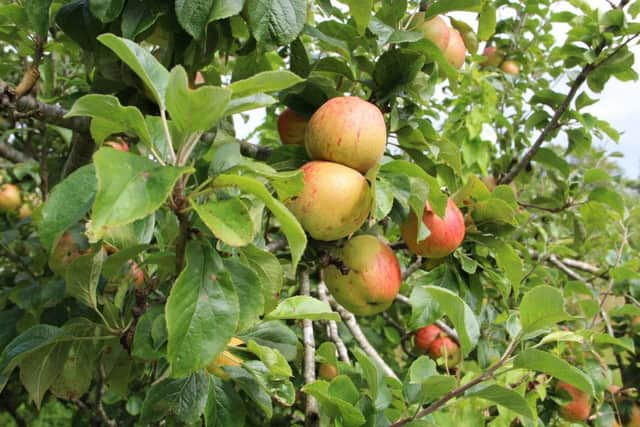End of September brings a bountiful supply of fruits ready for harvest


The saucer-like white elderflowers have given way to clusters of purple berries, heavy with rain, they bow from the branches. Cut them and remove the berries with a fork.
Elderberries are packed to the gills with antioxidants and making a cordial from them is infinitely better for you and cheaper than investing in a generic bottle of mass produced blackcurrant syrup.
Advertisement
Advertisement
To make it, gather a bucket of berries, give them a good wash and remove the fruit into a pan. Cover with water and simmer for 25 minutes. Strain through muslin and squeeze to get as much juice as you can. For each litre of liquid measure 750g of granulated sugar. Boil for 10 minutes (add a couple of cloves if you wish) and store in sterilized bottles.
For a more potent brew, combine a kilo of berries with a litre of vodka and 100g sugar in a kilner jar. Shake twice a day for a couple of weeks and then leave for two months. Strain the liquid into clean bottles and enjoy the same way you would sloe gin. I like to heat good quality local apple juice and add a toot at the end for a drink to warm the cockles on a damp November day. The soaked berries can be added to the cooking juices of game or pork to pep up the sauce.
Damsons are finally ready to harvest. For me these dusky, bluish fruits brighten up the fact that summer has gone. They get their name from the city of Damascus, capital of modern day Syria and from the Latin word “damascenum” meaning plum of Damascus. They’ve been cultivated for millennia and should be celebrated.
Damsons need sugar – when sampled raw they have a mouth puckering dryness. Add sugar and they transformed into a fragrant unique taste. The Spanish make a “cheese” from quince where they boil the fruit with sugar to a product that can be sliced to enjoy with cheese.
Advertisement
Advertisement
I made this accidently a few years back with damsons by going a bit heavy handed with the sugar. Sometimes the best recipes come out of mistakes and this was definitely one. I added a little clove and black pepper to the mix and stored them in small jam jars.
I’ve included a proper recipe for Damson cheese or membrillo to give it it’s Spanish name. This sounds a lot more romantic on a label too. With their high pectin levels, damsons are ideal to be frozen and then used for crumbles or compotes throughout the winter.
Rosehips are perfectly ready now – shiny, corally red orbs adorning thorny rose bushes. They’re easily made into a simple, floral syrup to be enjoyed throughout the winter. It’s packed with vitamin C to ward off colds and is delicious to boot. One of my earliest memories is of rice pudding at school with a blob of this scarlet syrup in the middle. I’ve added a recipe for the rosehip syrup and one for rice pudding that’s been made a bit decadent with coconut milk and saffron.